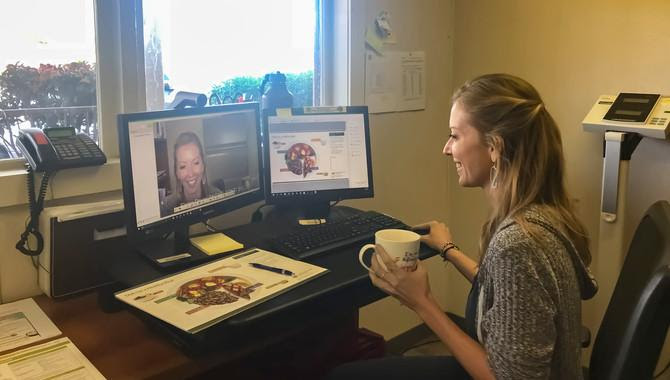Rebuilding Better — Planning for a Climate Resilient COVID-19 Recovery
“Never allow a good crisis to go to waste – it’s the opportunity to do the things you never thought possible and make them possible.”
Rahm Emanuel, former Chicago Mayor and Obama Chief of Staff
Local leaders across the world are struggling to adapt to the economic and social constraints of the COVID-19 pandemic. While the immediate focus is first and foremost on protecting public health, safety and well-being, there will also be lessons learned and opportunities for growth and reinvention of our communities.
Difficult situations and systemic disruptions can provide a rare opportunity to gain insights and develop new approaches that can improve our lives long after the pandemic is under control.In the aftermath of the 2008 recession, fossil fuel-heavy and otherwise polluting industries received a major share of the federal bailout money. Today, however, practical options for green investments are plentiful. Renewable energy is cheaper than coal in most of the world, and increasingly competitive with natural gas.
Now is the time to invest stimulus dollars into projects that address public health, climate and social-equity needs, including infill affordable housing, critical transit projects, bicycle and pedestrian infrastructure, broadband deployment and sustained teleworking and telehealth programs, zero-emission vehicle fleet conversion and infrastructure deployment, green workforce training and job opportunities, urban greening (especially in marginalized communities) and better access to healthy, local food.

We must not boost the economy short-term in a way that would continue to lead us into future health crises (pandemics or existing chronic illnesses) exacerbated by pollution and climate change. While stimulus packages and economic-recovery efforts are being developed at every level of government for workers and businesses (as well as calls for federal aid to state and local governments), it’s imperative that we consider opportunities to create more sustainable, resilient jobs and equitable development and invest in helping industries become cleaner and more resource-efficient.
The business community has increasingly recognized the critical link between the environment and the economy. That was the focus of Laurence Fink’s annual letter to the chief executives of the world’s largest companies. Fink, the founder and chief executive of BlackRock (the world’s largest asset manager with nearly $7 trillion in investments), announced that his firm would make investment decisions with environmental sustainability as a core goal and begin to exit certain investments that “present a high sustainability-related risk,” such as those in coal production. His intent is to encourage every company, not just energy firms, to rethink their carbon footprints.
“Climate change has become a defining factor in companies’ long-term prospects….The evidence on climate risk is compelling investors to reassess core assumptions about modern finance,” according to Fink’s letter.
Investors are increasingly reckoning with these questions and recognizing that climate risk is investment risk. Indeed, climate change is almost invariably the top issue that clients around the world raise with BlackRock.
Our investment conviction is that sustainability – and climate-integrated portfolios can provide better risk-adjusted returns to investors. And with the impact of sustainability on investment returns increasing, we believe that sustainable investing is the strongest foundation for client portfolios going forward.
Over the next few years, one of the most important questions we will face is the scale and scope of government action on climate change, which will generally define the speed with which we move to a low-carbon economy.
Over the 40 years of my career in finance, I have witnessed a number of financial crises and challenges…Even when these episodes lasted for many years, they were all, in the broad scheme of things, short-term in nature. Climate change is different…Companies, investors, and governments must prepare for a significant reallocation of capital.

Challenging times are uniquely opportune for assessing what’s most critical. In times of distress, priorities are often clarified, and more support can be garnered for barriers to be removed.
We’ve seen the extent to which people are willing and capable of making significant and dramatic changes in the face of a global threat. People have substantially reduced their carbon footprint – in ways that would have been unimaginable just weeks ago. These “blue sky” reductions may only be temporary, but they show that we can make these behavior changes, and we can tangibly and viscerally see the effects of those shifts.
These reductions (however long they last) have come at a significant cost for businesses and millions of workers. Municipalities are also getting hit hard— with revenue from hotel and event taxes, parking meters, and sales and property taxes coming to a halt last month amid strict “stay at home” orders, cities across the nation are anticipating major budget shortfalls this year and many are planning to slash programs and cut staff in response. The California League of Cities estimates that over the next two years, revenues will drop over $7 billion across our state’s 482 municipalities. San Francisco leaders anticipate a budget shortfall as high as $1.7 billion over the next two fiscal years. The City of Sacramento anticipates that the coronavirus crisis could cause a $90 million hit in revenue to the city of Sacramento’s budget through June 2021.
Given the long-lasting economic impacts we’re likely to face as a result of the COVID-19 pandemic, we must be much more strategic and creative with our investment strategies and our core principles, focusing on high-priority projects that achieve multiple economic, social and environmental benefits.
While we work to minimize the immediate hurt (especially for our most vulnerable residents and communities), we should also try to build on the lessons we are learning from this difficult period to sustain some of the new environmentally friendly habits people are practicing without the social and economic burden currently attached to them.
As local governments assess budget reductions, capital-improvement plans, transportation infrastructure and other expenditure plans, they should maintain and prioritize efficiency measures where possible that support both economic recovery and environmental leadership and take advantage of existing state funding programs to continue critical climate resiliency work and optimize the return on every dollar spent.

Reimagining Green-Recovery Opportunities
- Sustain and expand remote work, education, health and civic engagement: Invest in equitable broadband access and computer-equipment lending and work with large employers, hospitals and schools to expand remote programs.
- Expand water and energy programs to reduce utility bills: Use existing financing mechanisms and utility rebates to expand programs to increase efficiency, water-reuse and renewable-energy measures. The opportunity to retrofit empty commercial and municipal buildings is particularly timely during the stay-at-home mandates. Local leaders should also consider prioritization of small and medium businesses and marginalized communities to increase recovery capacity.
- Develop green workforce training programs: Invest in green, innovative, entrepreneurial and inclusive workforce training programs to get people back to work and to accelerate clean, resource-saving economic development opportunities, including jobs in energy and water efficiency and upper watershed restoration for wildfire prevention, carbon sequestration, and water supply reliability.
- Increase access to healthy, local food: Establish a “food recovery to food security” network with restaurants, catering companies, grocery stores, local food banks, schools and other community food hubs to reduce food waste and address food insecurity. As many as one in four children were food-insecure – “hungry” – even before the pandemic hit, and food deserts were widespread across this country in both urban and rural areas.
- Maintain clean-air improvements through investments in transit, bicycle and pedestrian infrastructure: Enhance accessibility and effectiveness of car-light lifestyles through investments in transit, bicycle and pedestrian infrastructure and zero emission vehicles (ZEVs). Completing existing backlogs of shovel-ready ADA-compliance and complete-streets projects could create a significant number of new jobs and could be completed with shorter timelines given the reduced traffic in many regions during the pandemic shutdown, .
- Invest in urban greening: Increase access and availability of parks and open space for community use and public health (as deemed safe and appropriate by health officials) by increasing investments in open space, urban greening and other multi-benefit resilience measures, especially in marginalized communities.
- Streamline permitting and reduce or eliminate fees for infill and transit-oriented development: In response to the increased urgency of affordable housing needs and the opportunity to encourage car light lifestyles cities should reassess their permit process and fee structure to increase climate friendly affordable housing e.g., infill, transit-oriented housing.
- Support long-term community-resilience planning to reduce future shocks: Expand Community Emergency Response Training (CERTs) programs to train residents in climate resilience and disaster-response skills. Create pathways for jobs by allocating resources to community-ambassador positions that support emergency communications and neighborhood-level preparedness and recovery.
Local leaders can support these measures through existing funding and financing programs such as: Pay as You Save and Property Assessed Clean Energy Financing; Energy Savings Performance Contracting; Cal Recycle’s Food Waste Prevention and Rescue Program; the Active Transportation Program; Low Carbon Transit Operations Program; Low Carbon Transportation Investment programs such as the Clean Mobility Options Voucher Pilot Program; Sustainable Agricultural Lands Conservation Program; CNRA’s Urban Greening Program and the Affordable Housing and Sustainable Communities Program. More information on available funding and assistance can be found at Fundingresource.org.
As leaders and stakeholders, our first responsibility is to ensure the health, safety and well-being of people and businesses within our communities. Already, many of us are doing that in creative new ways that wouldn’t have been possible before this disruption. As we forge through this time together, we have the opportunity to learn from each other and extend that creativity to ensure our communities’ long-term resilience and prosperity.
Resources
Visit Fundingresource.org for assistance and information on primary grants sources to fund: Active Transportation, Affordable Housing, Drinking Water, Parks, Public Transit and Shared Mobility, Stormwater, Street Repair and Wastewater Management
Local Government Commission Newsletters
Livable Places Update
CURRENTS Newsletter
CivicSpark™ Newsletter
LGC Newsletters
Keep up to date with LGC’s newsletters!
Livable Places Update – April
April’s article: Microtransit: Right-Sizing Transportation to Improve Community Mobility
Currents: Spring 2019
Currents provides readers with current information on energy issues affecting local governments in California.
CivicSpark Newsletter – March
This monthly CivicSpark newsletter features updates on CivicSpark projects and highlights.



